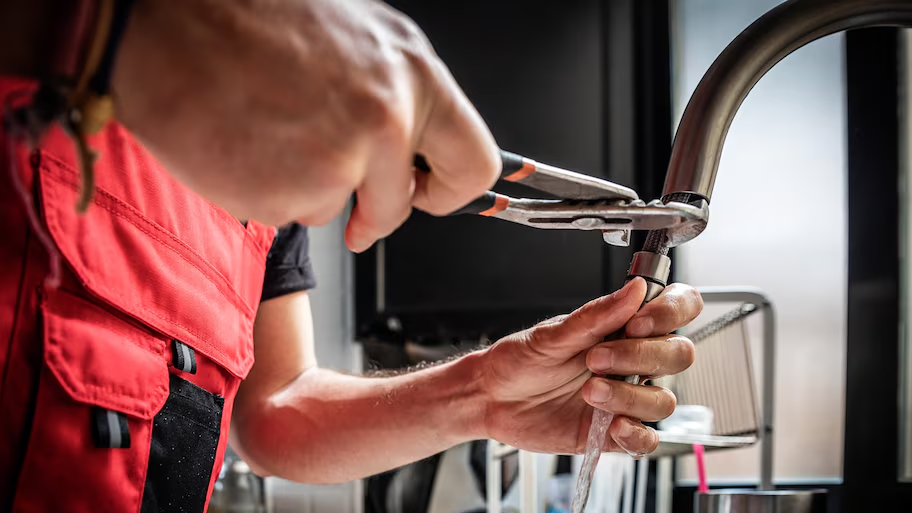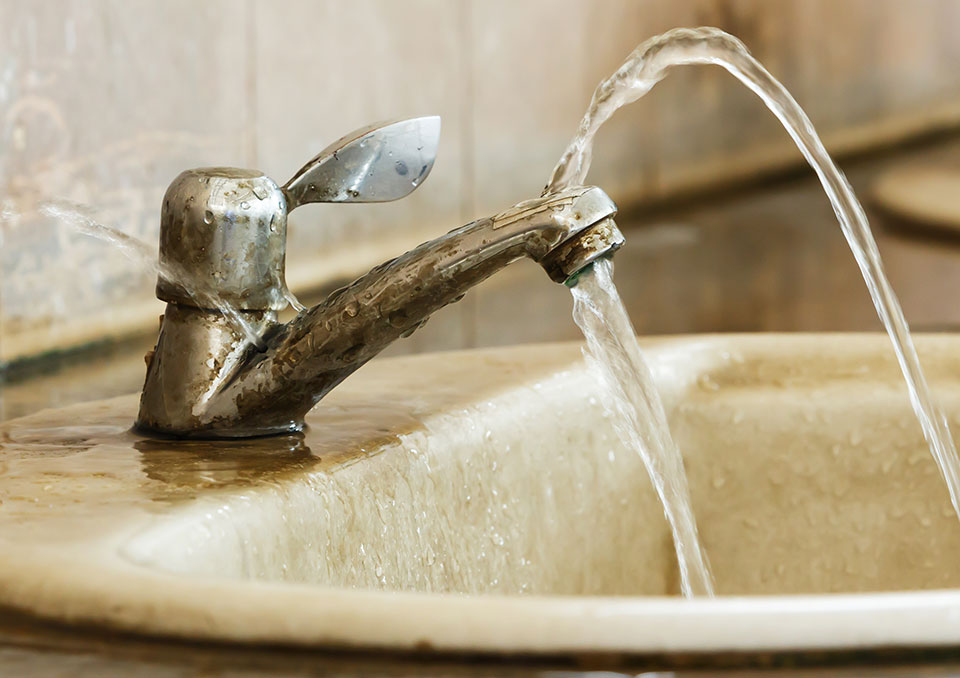What It's Vital to Address a Leaking Faucet
What It's Vital to Address a Leaking Faucet
Blog Article
This great article on the next paragraphs about Why It's Important to Fix Leaky Faucets is indeed stimulating. Read it for yourself and decide what you think about it.

Trickling taps might look like a minor trouble, yet their influence surpasses simply the annoyance of the sound. From wasting water to incurring unnecessary monetary expenses and wellness dangers, ignoring a dripping faucet can bring about numerous consequences. In this post, we'll delve into why it's critical to address this typical home problem immediately and successfully.
Waste of Water
Environmental Effect
Dripping faucets add dramatically to water wastefulness. According to the Epa (EPA), a single tap leaking at one drip per second can waste greater than 3,000 gallons of water annually. This not only pressures water resources yet likewise affects ecological communities and wild animals dependent on them.
Step-by-Step Overview to Fixing a Dripping Tap
Devices Required
Before trying to repair a trickling faucet, collect the necessary tools, consisting of an adjustable wrench, screwdrivers, replacement components (such as washing machines or cartridges), and plumber's tape.
Typical Tap Issues and Their Solutions
Identify the kind of tap and the specific issue triggering the drip. Usual troubles consist of worn-out washers, corroded valve seats, or malfunctioning O-rings. Describe supplier directions or on the internet tutorials for step-by-step support on repair services.
Financial Prices
Boosted Water Expenses
Beyond the environmental impact, trickling taps can pump up water expenses substantially. The accumulated wastage with time converts right into higher energy costs, which could have been stayed clear of with prompt repair work.
Potential Property Damages
Furthermore, long term leaking can lead to harm to fixtures and surface areas surrounding the tap. Water accumulation can trigger discoloration, rust, and also structural problems if left unattended, leading to added repair expenses.
Wellness Issues
Mold And Mildew and Mold Growth
The constant visibility of dampness from a trickling tap produces an ideal atmosphere for mold and mold growth. These fungi not just endanger indoor air high quality yet additionally pose health risks, especially for individuals with breathing conditions or allergies.
Waterborne Illness
Stationary water in trickling taps can end up being a breeding place for germs and other pathogens, increasing the threat of waterborne conditions. Pollutants such as Legionella bacteria thrive in stationary water, potentially resulting in serious ailments when consumed or inhaled.
Do it yourself vs. Expert Repair
Pros and Cons of Do It Yourself Repair
While some might attempt to deal with a leaking tap themselves, DIY fixings come with their very own collection of obstacles. Without proper expertise and tools, DIY efforts can exacerbate the problem or bring about incomplete repair work, extending the trouble.
Benefits of Hiring an Expert Plumber
Working with a professional plumber guarantees that the underlying root cause of the trickling tap is resolved effectively. Plumbings possess the know-how and tools to detect and repair faucet issues efficiently, saving time and lessening the danger of additional damage.
Environmental Responsibility
Individual Contribution to Preservation
Taking duty for dealing with leaking faucets aligns with broader initiatives towards water conservation and environmental sustainability. Every person's actions collectively make a significant influence on maintaining valuable sources.
Lasting Living Practices
By prioritizing punctual repair services and adopting water-saving behaviors, individuals add to sustainable living techniques that benefit both existing and future generations.
Safety nets
Regular Upkeep Tips
To prevent leaking faucets, carry out regular upkeep such as cleansing aerators, examining for leakages, and changing worn-out parts promptly. Additionally, take into consideration installing water-saving devices or updating to more efficient components.
Importance of Prompt Repairs
Addressing dripping faucets as quickly as they're observed protects against further water wastage and potential damage, ultimately saving both water and money over time.
Effect On Property Value
Perception of Well-Maintained Property
Maintaining a home in good condition, including addressing maintenance concerns like leaking faucets, enhances its regarded worth and charm among potential customers or occupants.
Influence on Resale Worth
Qualities with well-kept plumbing fixtures, consisting of faucets, command greater resale values in the property market. Dealing with trickling faucets can add to a favorable impression throughout home inspections and settlements.
Verdict
Dealing with a trickling faucet exceeds plain convenience; it's a vital action towards conserving water, minimizing economic prices, and protecting health and wellness and residential or commercial property. Whether with do it yourself fixings or specialist aid, taking action to repair leaking faucets is a small yet impactful method to promote responsible stewardship of resources and contribute to a healthier, more sustainable future.
How to Fix a Leaky Faucet: Step-by-Step Repair Guide
A leaky faucet may seem like a simple annoyance, but if it's not fixed promptly, that leak could cost hundreds to potentially thousands. From water damage to mold, mildew, and high water bills, even a tiny leak can be catastrophic if left unattended. Damage like this can even affect the overall value of your home, so it's important to take the right approach for leaky faucet repair. You may need the help of a plumber in some cases, but we've got a few tips you can try on how to fix a leaky faucet before calling the pros.
Four Faucet Types
When you're learning how to fix a leaky faucet, the first step is knowing what kind of faucet you're working with! There are four common types.
Cartridge Faucets
Cartridge faucets come in one- or two-handled varieties. In one-handled cartridge faucets, hot and cold water combines in a single cartridge. In the two-handled versions, hot and cold water are controlled separately and mixed in the faucet.
Ball Faucets
Ball faucets have a single lever you push up and down to adjust the pressure and rotate to change the temperature. A slotted metal ball controls the amount of water allowed into the spout.
Compression Washer Faucets
They're the oldest type of faucet, but they're still used in many homes — especially older ones. Compression faucets have two separate handles that, when turned, raise or lower the washer that seals a water valve. This valve stops water from flowing through the faucet when it is turned off.
Disc Faucets
Disc faucets rarely need to be repaired due to their maintenance-free design. The water flow is controlled by two discs — the upper one raises and lowers against a fixed lower disc, creating a watertight seal. If your disc faucet starts leaking, you may need to replace the seals or clean residue buildup from the inlets.
Fixing a Leaky Faucet
Step 1: Turn Off the Water
Whether you're learning how to fix a leaky bathtub faucet or how to fix a leaky kitchen faucet, always turn off the water supply to your working area when you're fixing a leak. The last thing you want is a flood added to your list of things to fix.
Look for the shutoff valves below your sink or around the tub and turn them clockwise to stop the water flow. If your faucet doesn't have shutoff valves, you may need to turn off the water for the whole house. Check to make sure it's off by turning the faucet on. If nothing comes out, you're ready to start the repair.
Step 2: Take Apart the Faucet
How you disassemble your faucet depends on the type of fixture you have. You can use a flathead screwdriver to remove the caps on top of the handle or handles for cartridge and compression faucets. Inside, you should see handle screws. Unscrew these with a screwdriver to remove the handle.
Disc- and ball-style faucets will typically have an inlet screw near the handle, and removing that will reveal the interior of the faucet.
Detach the Valve Stem
For cartridge- and compression-style faucets, you'll see the inner valve stem or cartridge once you remove the faucet handles. If you have a compression faucet, unscrew the brass valve stem. If you have a cartridge faucet, pull out the cartridge. If your cartridge has been in place for a while, it may require some tools or extra force to remove it due to mineral deposits.
Examine and Replace Parts
Once you've removed the parts, check them out to confirm what needs to be replaced. You may see corroded rubber washers, O-rings, stems, or cartridges. On a ball-style faucet, check the seats and springs for damage.
If you need to repair a leaky disc faucet, check the inlet and seals on the lower disc.
Once you determine what parts must be replaced, visit your local hardware store. Bring the damaged parts with you to ensure you can purchase the correct components to replace them.
Clean Valves and Faucet Cavity
If you've removed a stem or cartridge, you may notice mineral buildup in the faucet's threads. Use white vinegar to clean the valve seat by soaking it for a few minutes, then scrub it away with a soft toothbrush and rinse with warm water. You can also clean the interior of the faucet in the same way.
Reassemble the Faucet
Once your faucet is cleaned and the required parts have been replaced, it's time to reassemble it. Put the pieces back together and slowly turn the water supply back on. Doing this slowly is crucial because too much initial water pressure can damage the new hardware you've just installed.
https://homewarranty.firstam.com/blog/how-to-fix-leaky-faucet

We were guided to that write-up on from a good friend on a different web blog. Do you know someone else who is involved in the niche? Be sure promote it. Many thanks for your time spent reading it.
Report this page